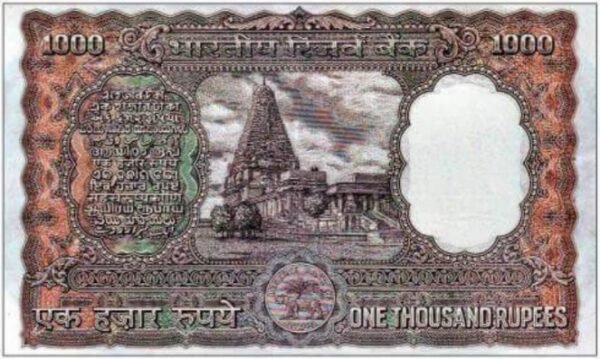A Wonderful Collection of Indian Currency Notes
A wonderful collection of Indian Currency Notes.
◾Important Link::
Wonderful collection of currency notes::


The Indian rupee is the official currency of India. The rupee is divided into 100 paise (singular: paisa), although by 2019, the 1 rupee series has the lowest value in use. The issue of currency is controlled by the Reserve Bank of India. The Reserve Bank manages the currency in India and acquires its role in currency management under the Reserve Bank of India Act, 1934.

In 2010, a new rupee symbol was officially adopted. This was designed by DD Uday Kumar. It is derived from the Devanagari consonant and the verb of the Latin capital letter . The parallel lines at the top (with white spaces between them) induce the Indian flag of the tricolor and also show a sign of equality that symbolizes the country’s desire to reduce economic inequality. The first series of coins with the new rupee sign started circulating from July-July, 2011. Earlier, India used and “Ray” as symbols of many rupees and one rupee respectively.

On November 8, 2016, the Government of India declared the ban on 500 and ₹ 1000 notes invalidated from midnight onwards. In addition to the new red 500 note, a series of new igned 500 notes has been in circulation since November 10, 2016. The 1,000 1,000 note has been suspended.

On 25th August 2017, a new નો 200 note was added to the Indian currency structure to fill the gap of notes due to high demand for this note after note.
Use of worldwide rupee
The Straits Settlements was originally the outpost of British Malay Archipelago Company. In 187, the Indian rupee was made the only official currency within the Straits Settlements because it was operated as a part of British India. The move was opposed by locals. However, the Spanish dollar continued to circulate and 1845 introduced a coin for the Straits Settlements employing a system of 100 cents = 1 dollar, during which the dollar was adequate to the Spanish dollar or the Mexican peso . In 1867, the administration of the Straits Settlements was separated from India and therefore the Straits dollar dollar was made the quality currency, and attempts to reintroduce the rupee were eventually abandoned..
The Government of India introduced the Gulf Rupee – also referred to as the Persian Gulf Rupee – replacing the Indian rupee with the Federal Reserve Bank of India Act of 1 May 1959 for circulation outside the country. The plan to create a separate currency was to scale back the strain on India’s foreign reserves through gold smuggling. After India devalued the rupee on June 6, 1966, those countries still use it – Oman, Qatar and therefore the True States exchanged the Gulf rupee for his or her own currency. Kuwait and Bahrain have already done so with the Kuwaiti dinar in 1961 and therefore the Bahraini dinar in 1965, respectively.
◾Important Link::
Collection of Indian currency notes from 1905 to date in pdf format.This 88 page pdf contains photos of all currency notes. Take a look once and for all.

